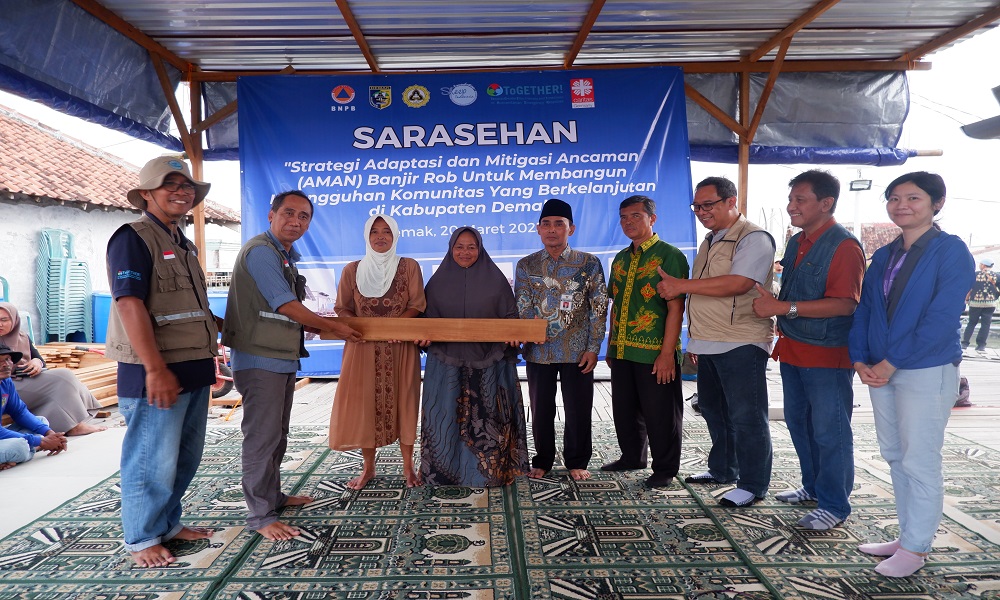Efforts to build the resilience of coastal communities against climate change and disaster risks go beyond physical infrastructure. Recognizing the importance of cross-sectoral collaboration formed the foundation of the recent “AMAN” Program Sarasehan (Dialogue) in Demak. The event served as a shared platform for all involved parties to exchange experiences, strengthen coordination, and formulate sustainable steps for the interventions that have been implemented.

The Sarasehan brought together a diverse group of stakeholders from the field—including grassroots community organizations (Organisasi Masyarakat Basis/OMB) from the villages of Sriwulan, Surodadi, and Timbulsloko; construction teams for floating and amphibious houses; program participants; and the Village Disaster Preparedness Teams (Tim Siaga Bencana Desa/TSBD). Government stakeholders also attended, including representatives from the Department of Marine Affairs and Fisheries, the Housing and Settlement Area Agency (Dinperkim), the Cooperative Agency, the Regional Disaster Management Agency (BPBD), the Meteorological, Climatological, and Geophysical Agency (BMKG), as well as village government representatives.
A common thread throughout the discussions was the importance of synergy between communities and stakeholders. The three program villages shared similar experiences in transforming their livelihood management—such as crab, milkfish, and shellfish farming—to become more adaptive to disaster risks. This shift has been supported technically and institutionally by the SHEEP Indonesia Foundation (YSI) through the AMAN (Adaptation and Mitigation of Tidal Flood Threats) Program for Building Sustainable Coastal Community Resilience in Demak Regency. Participants also shared their experiences implementing the construction of floating and amphibious houses, which were developed as adaptive measures against flooding and tidal inundation.
The forum also reaffirmed the importance of enhancing local community capacity—not only in technical aspects, but also in institutional development and disaster literacy. “We hope this process doesn’t end here. Once YSI’s program concludes, there needs to be a joint commitment from various parties, especially the relevant agencies, to ensure that all initiated and ongoing programs remain sustainable,” said Heri Sasmito from YSI.

During the discussion, BMKG also highlighted the importance of climate literacy and the appropriate use of weather data to support coastal communities’ fishing and aquaculture activities. Such information is expected to help improve the communities’ economic resilience through more adaptive decision-making.
The AMAN Demak Program, facilitated by YSI, integrates collaborative solutions with a localized approach. The floating and amphibious houses are not just technical innovations, but also symbols of participatory adaptation—constructed with the involvement of local builders and resources, utilized by the community, and supported by YSI in collaboration with academics (from UNIKA) and government institutions (DINPERKIM).
The Sarasehan concluded with a symbolic handover of the floating and amphibious houses to the beneficiary residents, along with the handover of a boat unit to the Village Disaster Preparedness Team in Timbulsloko. In his message to the community, Timbulsloko Village Head, Nadiri, emphasized the importance of shared responsibility.

“Saiki tugase dewe ngrawat lan njogo opo sing wes dibangun lan diwenehi neng tlatah mbuloko kene (Now it is our responsibility to maintain and take care of what has been built and given to us in this land of Timbulsloko),” he concluded.

